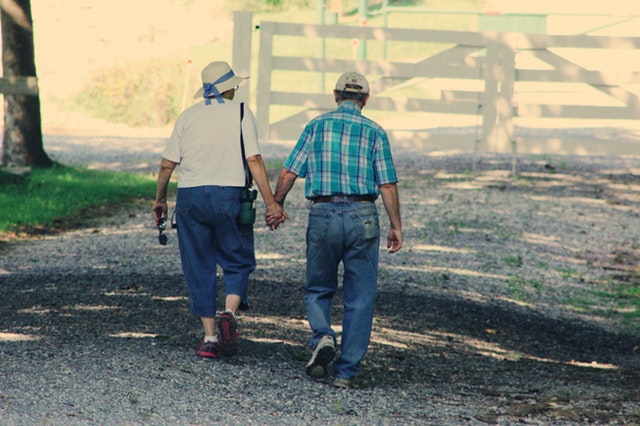

Blog
Whether you or someone you love is considering staying in their home as they age or moving into a senior living facility, there are a few important factors to keep in mind.

Last year, a young New Zealand lawmaker shut down a fellow member of parliament who was heckling her climate change speech with two words: “OK, Boomer.” This simple phrase started an online wildfire and ignited a conversation about the generation known as “baby boomers.” Born just after World War II, this demographic represents a period of growth, hope, and prosperity. The building, real estate, and senior housing industry has been thinking about the boomer generation for a while now. Between the years 1946 and 1964, 76 million babies were born. Every day until 2030, 10,000 of these individuals will turn 65, which means they will likely be retiring, and eventually considering how and where they want to age. This poses the question: how are we going to meet the growing demand for housing and care for this population?

Whether you or someone you love is considering staying in their home as they age or moving into a senior living facility, there are a few important factors to keep in mind. SWA services for senior living revolve around the following three factors:
1. Safety
This is probably a no brainer. Senior living exists mainly to accommodate changes in physical, visual, and cognitive abilities that may occur as a result of the natural process of aging. Safety is crucial and this is where our accessibility team really shines in senior housing. There are different considerations for aging-in-place vs. new construction vs. retrofits of existing facilities to ensure that seniors are living in places that are well adapted, accessible, and safe for their changing needs and lifestyle.
2. Health
The process of aging does not need to be synonymous with disability Smart design and construction can create spaces that are beneficial to an aging body and mind and promote overall wellbeing and health. Have you heard of Active Design? What about Universal Design? Wayfinding? I’m sure you’ve heard of Indoor Air Quality, but what role does it play in senior living and health? With SWA’s expertise combined with today’s technology, we can keep our minds and bodies sharp and functional long into aging.
3. Comfort and Efficiency
We all want to be comfortable in the spaces in which we live, but efficiency and comfort often go hand in hand. Balanced ventilation, heating and cooling, and sound are important considerations in senior living.
All three of the considerations above are integral to all types of senior housing. Keep an eye out for future blogs that will take a deeper dive into these considerations.
”The times they are a-changing,” and aging parents are less likely to be living with their children or other members of their family. And, as quality of life and wellbeing are still very strong for many seniors, many don’t want/have to give up freedom, socializing, and their active lifestyles. Often the first thought that comes to mind when hearing the term “senior living” is some variation of a nursing home or senior living community. While these can be necessary and beneficial in some cases, there are also some other great options that promote more independent, social and active living.
1. Aging in Place

Aging in place is pretty much what it sounds like – choosing to age where you already live. This means not moving into a different home or facility, being able to stay close to your neighbors, friends, and family, and remaining in the community you helped build. This is a great option for seniors who prefer freedom and independence and who need little to no help with day to day tasks. It also can be a much more affordable option. The caveat: existing homes are usually not accessible and/or safe for an aging person. There is now a larger push to incorporate Inclusive/Universal design in a building’s design stage, so that it’s already prepared for aging in place. If you decide to age in a home or building that is not already able to accommodate your changing needs, it’s crucial that you make appropriate modifications safely and correctly.
Affordable ways to make your home more accessible:
To find out more ways to modify your home, visit aginginplace.org/home-modifications/
2. Independent Living Communities
Independent living communities can vary in style and description, but they are essentially housing with arrangements/agreements designed solely for seniors. They can be either newly constructed or retrofitted homes/apartments that foster both independence in terms of care, but also social living. This option caters more towards seniors who don’t need much care but could benefit from some assistance with daily tasks, such as cooking and cleaning.
Some trends that we’re seeing in independent living communities are:

Active Design – There are some senior individuals who live very active lifestyles and want to keep it that way for many years to come. There are also some senior individuals who want to improve their physical activity while in senior living. Both are made possible with active design.
Universal Design – Implementing Universal Design features into the built environment results in usable spaces that accommodate the widest variety of people, regardless of factors including ability, age, size, gender, language, cultural understanding, and other factors of human diversity. To that end, we support the eight goals of Universal Design established by the Center for Inclusive Design and Environmental Access (IDEA) at the University of Buffalo, Buffalo, New York.
Social living – The Boomers didn’t grow up with texting and Instagram, so they’re pretty social by default! Some living communities offer social functions such as happy hours and cook-outs and offer lounges and pools. There’s also been a push for integration with the local community as well as multi-generational living – check out Senior Cohousing.
3. Long-Term Care/Medical Facilities
Assisted living, nursing home facilities, memory care facilities and rehabilitation facilities are all considered less independent. All involve supervision and medical care covering a spectrum from minimal intervention to intensive care. Assisted living communities and nursing homes are both residential in nature, while rehabilitation centers prioritize medical capabilities and features. These considerations affect the design, construction and retrofit of these buildings differently.
Some ways that high performance building methods can help to achieve these objectives is through:
In upcoming blog posts, we will explore the three considerations for senior living (safety, health, and comfort/efficiency) in more depth. Stay tuned.
Contributor: Jayd Alvarez, Marketing Coordinator
Jayd Alvarez